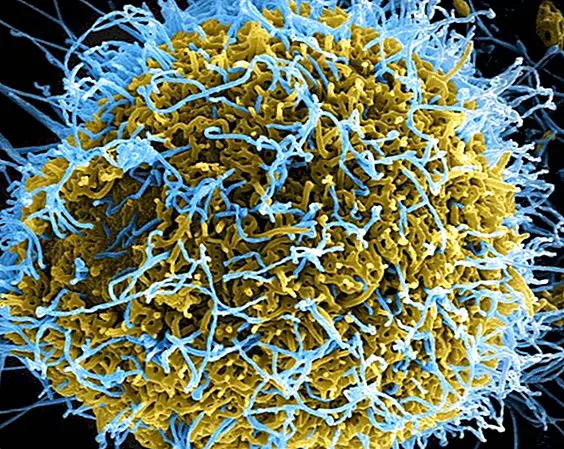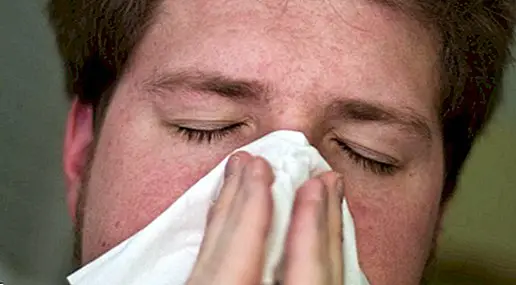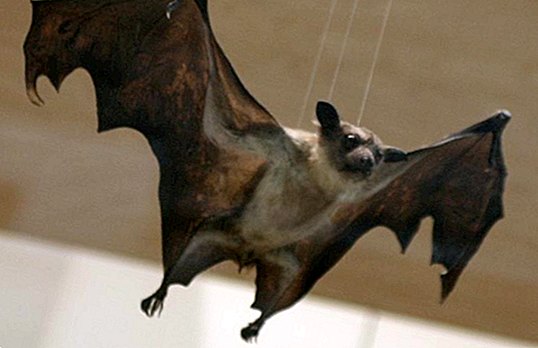How Ebola is spread
The Ebola is a acute viral infectious disease, which is especially characterized by its very high lethality (which can reach up to 90%), for not having a preventive vaccine to help in preventing infection, and for not having a cure. That is, the medical treatments that exist so far are palliative, and seek to maintain the patient's life until their immune system is able to fight for itself against the virus and create enough antibodies for it.
Although the first recorded outbreaks occurred in 1976, when it produced two simultaneous outbreaks in Nzara (Sudan) and near the Ebola River (Democratic Republic of the Congo), and every year new cases are registered in Africa, it was in December of last year 2013 when a new and deadly outbreak was recorded, which as of October 10, 2014 has caused the death of 3,879 people, according to the latest data made public by the World Health Organization.

Since there is no vaccine that foresees contagion, it is extremely important for the entire population to know how Ebola is spread, and how it is transmitted, precisely to prevent it.
How is Ebola spread?
Among humans, the Ebola virus is contagious from direct contact with blood, other fluids (such as vomiting) and bodily secretions from an infected person who already has symptoms of the disease, as well as from deceased people already infected. In fact, patients who die of Ebola may continue transmitting the disease, an incident that may occur during the burial process.
Among the body secretions that can transmit the virus we can highlight especially saliva, urine, vaginal fluids, semen or feces. If a contagion occurs through these means we find ourselves before what is medically known as a direct contact.
On the other hand, it is known that the Ebola virus can remain in the semen of cured men for up to three months.
The Ebola contagion can also be produced by being in contact with objects that have already been contaminated with the infected secretions of the infected patient. Among these objects we can find tooth brushes, used needles, dirty bedding or clothing. It would be an indirect contact.

And from animals to humans? How is it spread?
The transmission of animals to humans can also occur, in the same way that occurs between people: by direct contact with blood or other bodily fluids of certain wild animals, such as monkeys, bats (especially the fruit bat) , of the family Pteropodidae) and jungle antelopes.
How is contagion produced?
We must bear in mind that the Ebola virus is not transmitted by water or air, as both the Spanish Ministry of Health and the WHO itself have stated up to now.
That is, only passes from person to person through direct contact with any bodily fluid of the infected subject or individual, or the infected animal. For this reason, the majority of cases occur among family members or health personnel who have treated the patient affected by Ebola.

Although it is not so easy for one person to transmit the Ebola virus to another precisely because it is not transmitted through the air and the greatest risk of infection occurs when the patient already has symptoms, very few virus particles are needed to produce the disease.
Once in the body of the person not sick but infected, the virus infects the capillary endothelium and alters a type of cells known as "endothelial", which coat the inner surface of blood vessels, in addition to immune cells. By damaging the blood vessels, the platelets are not able to coagulate, so those affected succumb to hemorrhagic 'shock', which ultimately results in a very serious loss of blood.
To explain it in a simple way, the virus "clings" to the outside of the human cell to finally penetrate in its interior. Once it is inside it reproduces very quickly, being able to reproduce in several thousands. That is, they attack other cells and, in turn, create new viruses, so that the infection spreads throughout the body.
Can the Ebola virus be spread through the air?
As many epidemiologists and medical specialists say, although at the moment the infection only occurs from direct contact with the infected person, there is a possibility that in the future it could be transmitted through the air, or that it is a virus that mutates constantly, adapting to ensure its survival and proliferation.
This means that the virus may be able to change its degree of lethality in humans, the time it takes to cause the disease, its mode of transmission and its susceptibility to medications.
Images | NIAID / William Brawley / Cliff This article is published for informational purposes only. It can not and should not replace the consultation with a Physician. We advise you to consult your Trusted Doctor. ThemesInfections



